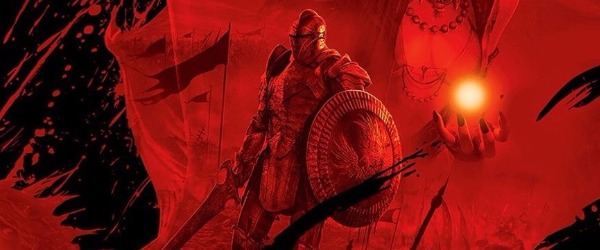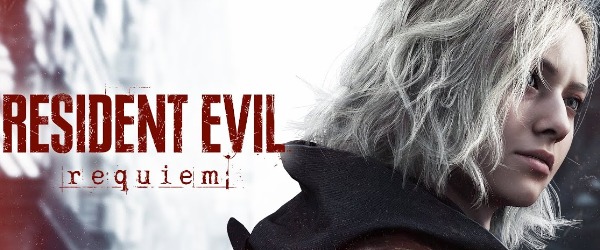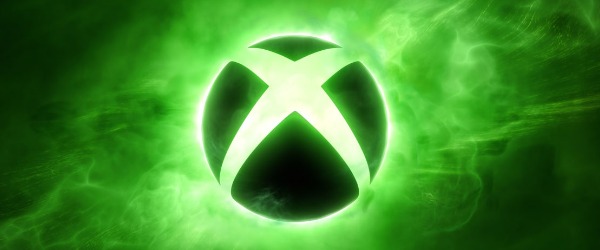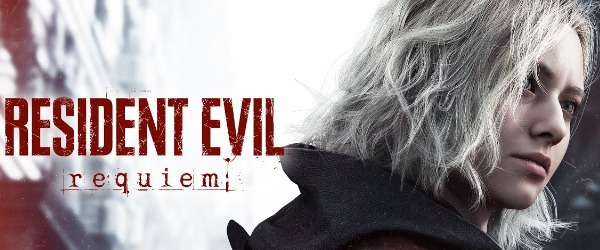
Videogames and the Oscars - Article
by VGChartz Staff , posted on 13 February 2015 / 3,694 ViewsMovie tie-in games have a reputation for being notoriously bad and shoddy, doing both a disservice to the original film and videogames as a medium. More often than not the movies that get adapted into videogames are high octane, action-oriented summer blockbusters and the aim is simply to extract as much money from the market as possible. Realistically no one expects games based on trashy films such as Catwoman, The Cat in the Hat, or Eragon to be good in the first place, but what about games based on films that have garnered recognition for the highest award in cinema?

As gamrReview’s foremost film buff (eat your heart out Jake Weston) I decided to take a look back at the films nominated for the Oscar’s highest award—Best Picture—that have also been adapted into videogames. Unfortunately, none of the eight films nominated for the 2014 Best Picture award have a videogame based on them, although I would go gaga for a Lego The Grand Budapest Hotel videogame. Still, as you will discover with this stroll down memory lane, being based on a great film does not necessarily make for a great game.
The Wizard of Oz (1939)

1939’s The Wizard of Oz was the fourth cinematic adaptation of L. Frank Baum’s classic fantasy novel. This Technicolor musical follows the adventures of Dorothy - played by Judy Garland - and her dog Toto as they are transported from their poor farm life in rural Kansas to the magical land of OZ by a freak tornado.
When in Oz, Dorothy and Toto team up with a cowardly lion, a brainless scarecrow, and a man made of Tin to ask the Wonderful Wizard of Oz to grant Dorothy her wish to return home. Along the way they must overcome the plots of a wicked witch and her army of flying monkeys. Though it was a critical success upon its first release - garnering six Oscar nominations, including Best Picture - it did not become a financial bonanza and cultural phenomenon until decades later.
Thanks largely to the resounding success of yearly television broadcasts of the film in syndication, the Library of Congress claims this is the most viewed film of all time. Over the years there have been a number of sequels and spin-offs, all trying to hawk off the film’s popularity, but none have come close to acquiring the same level of viewer affection as this particular version. The Wizard of Oz lost Best Picture to Gone with the Wind, also directed by Victor Fleming.

The Wizard of Oz was first adapted as an action game for the Super Nintendo by the Seta Corporation. In the game you controlled the four main characters and used their different abilities to rescue Toto from the Wicked Witch of the West and reach the titular Wizard of Oz so that Dorothy could return home.
A more recent title was released on the Nintendo DS, called The Wizard of Oz: Beyond the Yellow Brick Road. This was a turn based RPG in the vein of the Dragon Quest or Earthbound series. Although it is technically licensed from the original novel, rather than the film, it does little to step out of the 1939 film’s shadow. The game received better than expected reviews for a licensed game, but that still only equated to average aggregate scores. It was cited as being too simplistic for RPG enthusiasts, but its unique visuals and good use of the DS touchscreen earned it some positive reviews.
The Godfather (1972) & The Godfather Part II (1974)

After losing out on most of its nominations to perceived frontrunner Cabaret in 1972, The Godfather ultimately triumphed by winning Best Picture in addition to taking home statues for Best Adapted Screenplay and Best Actor (Marlon Brando). In the 1974 Best Picture race, meanwhile, The Godfather Part II became the first sequel to take top honors, cementing its legacy as one of the most respected film franchises in history. In 1990 The Godfather Part III was released and did some damage to that claim, but even that film garnered seven Academy Award nominations, including one for Best Picture.
The entire Godfather trilogy centers on the Italian-American Corleone crime family’s struggle to maintain its grip on power in the midst of betrayal, internal family corruption, and the changing ways of society. Masterfully acted, shot, and directed, The Godfather and its first sequel are both commonly cited as two of the greatest films of all time.

A videogame adaption of The Godfather was released in 2006, 32 years after the original film. The Godfather was an open-world, third person action game that bore similarities to the Grand Theft Auto series. Set between the years 1945-1955, it includes story sequences from the film as well as new material. You start out as a lowly foot soldier but work your way up through the ranks of the Corleone family to become part of the Godfather’s inner circle.
Due to a conflicting licensing agreement with Scarface: The World is Yours (they made him an offer he could not refuse), Al Pacino’s likeness does not appear in the game, but the title is nonetheless notable for featuring the last performance by Marlon Brando (unfortunately most of these recordings did not make it into the finished product). The Godfather received mostly positive reviews and performed well enough commercially to warrant a sequel. Still, director Francis Ford Coppola lashed out at the adaptation for glorifying violence, rather than cautioning against the dangers of leading a violent life.
Jaws (1975)

The original summer blockbuster, Steven Spielberg’s Jaws broke nearly every box office there was to break at the time of its release in 1975. The film is about a police chief, an oceanographer, and a shark hunter who join forces to capture a man-eating great white shark that has been feasting on beach goers in the resort town of Amity Island. This horror thriller crossed over to earn both popular and critical acclaim thanks to its three dimensional characters, haunting musical score, and sharp directing choices. Jaws won three awards come Oscar night but lost the 1975 Best Picture race to One Flew over the Cuckoo’s Nest.
The earliest Jaws videogame was simply titled Jaws and released on the NES in 1987. Mostly based on the fourth movie in the by-then-beleaguered franchise, it also incorporated elements from the first movie. Jaws had players pilot a boat until they randomly encountered sea creatures, at which point a diver would venture under water to destroy the nuisances and earn power-ups, at times encountering the feared great white shark. The game received reviews on both ends of the spectrum.

In 2006, Jaws Unleashed was released for the PC, Xbox, and PlayStation. Imagine GTA but instead of playing as a ruthless gangster in an urban playground, you play as a man-eating shark underwater. This M-rated adaption encouraged you to eat or destroy everything in sight. It also garnered muted critical acclaim. Finally, Jaws Ultimate Predator was released on the 3DS and Wii in 2011 - it was largely ignored by both critics and gamers, and when it wasn't ignored it was generally heavily critiqued.
Rocky (1976)

For my money it’s still the greatest sports movie ever made. Down on his luck Philadelphia boxer and part time bag man Rocky Balboa is given the opportunity of a lifetime when he is selected for a title bout against World Heavyweight Champion Apollo Creed. Rocky is often cited for undeservedly winning the Best Picture award over Martin Scorsese’s nihilistic Taxi Driver and Sidney Lumet’s bombastic Network in 1976, but the surprise underdog victory is part of Rocky’s enduring appeal.
Five sequels of varying quality released over the next three decades, though none of them earned the accolades of the endearing original. A spin-off focusing on Rocky’s relationship coaching Apollo Creed’s grandson is also in the works, titled Creed, proving that Sylvester Stallone just does not know when to quit.

The earliest Rocky videogame adaption is 1983’s Rocky Super Action Boxing for the ColecoVision, which was actually based on the events of Rocky III. The next adaptation was simply titled Rocky and released on the Sega Master System in 1987. The most influential adaptation, however, was the 2002 release (again, simply called Rocky), which was published by Ubisoft and developed by Rage Software for the PS2, Xbox, Gamecube, and GBA. This Rocky was a fighting game that recreated the epic fights from the entire series up to that point. Commercial success for the title meant that a sequel, called Rocky Legends, was released a few years later. The most recent incarnation was Rocky Balboa for the PSP, which was based on the surprisingly-decent sixth chapter in the Rocky saga, although sadly the same could not be said for the game itself.
Star Wars (1977)

The original Star Wars film remains the landmark moment for the sci-fi/space fantasy genre in cinema. Orphaned Luke Skywalker finds out he is part of an ancient order of Jedi Knights and teams up with a pair of droids, a cocky intergalactic smuggler, and the mysterious Ben Kenobi to save Princess Leia and assist the rebellion in fighting the evil imperial forces ostensibly led by Darth Vader. Two sequels followed in what was to be the first trilogy - one in 1980 and one in 1983 - though neither became Oscar darlings quite like the original (despite the fact that Episode V: The Empire Strikes Back is widely regarded as the best in the saga).
A trilogy of prequel films followed in 1999, but they were critically derided and series fans have been jumping down George Lucas’s throat ever since. None of that cheapens the achievement of the original Star Wars film, though, which still holds up really well despite all of the alterations Lucas has made in subsequent decades. Alas, the force was not strong enough with Star Wars come Oscar night - it lost Best Picture to Woody Allen’s neurotic romantic comedy Annie Hall.

I am not going to enumerate the ridiculous number of Star Wars videogames that have released over the years, both good and bad, but I will namecheck a handful of the more notable releases. 1983’s Star Wars arcade game is fondly remembered for its colorful vector graphics, the inclusion of John Williams’s score, and the incorporation of select soundbites from the film. The whole trilogy got a 16-bit updated with the Super Star Wars series of games, which were well regarded run-and-gun action sidescrollers.
I could also name-drop any of the numerous spin-off series inspired by the universe, including Star Wars Battlefront I and II, which were ridiculously fun to play and have fans still eagerly awaiting the long-anticipated third game in the franchise despite a 10 year wait. The Lego Star Wars series was also one of the best surprises in gaming, ushering in an era of licensed Lego games that were (and still are) a step above the usual movie tie-ins in terms of quality. Finally, Star Wars Knights of the Old Republic was the one game that made this PS2 owner jealous of Xbox owners. The list goes on and on; good and bad, Star Wars games are forever.
Raiders of the Lost Ark (1981)

George Lucas and Steven Spielberg’s ode to 1930s and 1940s serials, Raiders of the Lost Ark is one of the most beloved films of all time. Starring Harrison Ford as archaeologist and university professor Indiana Jones, Raiders took the action/adventure genre to new heights in 1981. Indy and his former flame Marion Ravenwood embark on a globetrotting adventure to prevent the Nazis from acquiring the Ark of the Covenant, which Hitler believes will make his army invincible.
The film garnered nine Academy Award nominations, winning four. However, it lost the 1981 race for Best Picture to Chariots of Fire, a film which is not only significantly less exciting than its title implies, but which also may be the most boring Best Picture winner to-date. Two subsequent Indy films were released, Indiana Jones and the Temple of Doom (which is actually a prequel), and Indiana Jones and the Last Crusade. Yup, that’s it. Only the three films were made. Nothing else to talk about here. The trilogy is great as is. Moving on.

There have been at least 15 videogame adaptations of Indiana Jones' adventures to date. The first was Raiders of the Lost Ark for the Atari 2600. It was derided as a poor imitation of Pitfall and for requiring one person to use two controllers to play. LucasArts published a number of critically acclaimed and beloved graphic adventure games on the PC using the Indiana Jones license in the 90s, which somewhat made up for the lacklustre first attempt to enter the gaming medium.
Jumping ahead a few years, Indiana Jones and the Emperor’s Tomb was an ambitious third person action/adventure title that released in 2003. It recreated the feeling of the films well enough but suffered from control and camera issues, ultimately resulting in average reviews. Things went downhill for the franchise for a while after that - an original Indiana Jones game was announced as in development for the PS3 and Xbox 360 circa 2007, but the game was quietly cancelled. Then Indiana Jones and the Staff of Kings came out for the Wii, DS, PSP, and PS2, but it failed to generate excitement and was ultimately sent out to die. Finally, Lego Indiana Jones: The Original Adventures and its sequel revived the franchise somewhat; both were well received Lego tie-ins.
E.T. the Extra Terrestrial (1982)

Wow, Steven Spielberg was on a roll. This time he introduces us to Elliot, a mild-mannered boy living in suburban California who befriends an alien botanist that was left behind by his fellow aliens. E.T. and Elliot form a deep bond and enjoy many misadventures as they try to keep E.T.’s existence a secret from government agents as well as Elliot’s mother.
E.T. unseated Star Wars as the highest grossing film of all time upon its release in 1982. Its unforgettable score, wonderful sense of whimsy, and emotionally stirring final sequence contributed to its status as one of the all-time film classics. It was nominated for nine Oscars and won four, however it lost out on Best Picture to Richard Attenborough’s Gandhi. In a rare instance of Hollywood restraint, plans for a sequel titled E.T. II: Nocturnal Fears were thankfully abandoned.
E.T. may be the only title on this list which is as culturally relevant as a game as it is a film but for completely opposite reasons. E.T. the Extra Terrestrial for the Atari 2600 is widely regarded as one of the worst games of all time. Reportedly coded in only a matter of five and a half weeks, the game was rushed out in order to make it onto store shelves in time for the holiday shopping season.

It puts the player in control of E.T. and tasks them with finding three pieces in order to reconstruct a telephone so that E.T. can phone home. You search for the pieces by falling into different wells then levitating out of them, avoiding enemies such as a scientist and an FBI agent. As one of the earliest videogames based on a film, E.T. was the start of a legacy of bad videogame tie-ins which lasts to this day. Were it released today, the publisher would probably just patch the game until it resembled something playable, but that option did not exist in 1982.
Facing warehouses filled with unsold cartridges, Atari decided to bury their inventory in a New Mexico landfill. The burial site was excavated last year, revealing that hundreds of thousands of E.T. copies were buried, but only about 1,300 were able to be recovered for the documentary film, titled Atari: Game Over. E.T. is often cited as a reason for the collapse of the videogame industry in the mid-80s, and for the demise of Atari as a company of good stature.
Continued in Part II.






















 Essay Pro
Essay Pro